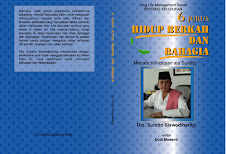Copy editing is a most important and time-consuming task. It requires the editor's close attention to a document's every detail, a thorough knowledge of what to look for and of the style to be followed, and the ability to make quick, logical, and defensible decisions in correcting for grammar, punctuation, terminology, sentence structure, clarity, conciseness, tone and voice, inconsistencies, and typographical errors.
To begin with, editors are thoroughly familiar with and comfortable applying the universally accepted editorial and typographic marks and symbols-or Indonesia Language System (EYD) if they are working on text in Indonesian.
The editorial function comprises two processes: mechanical editing and substantive editing. Mechanical editing involves a close reading, with an eye on consistency of capitalization, spelling, and hyphenation; agreement of verbs and subjects; scores of other matters of syntax; punctuation; beginning and ending quotation marks and parentheses; number of ellipsis points; numbers given either as figures or as words; and hundreds of other, similar details of grammatical and typographic style.
In addition to regularizing those details of style, the copy editor is expected to catch infelicities of expression that mar an author's prose and impede communication. Such matters include but are by no means limited to dangling participles, misplaced modifiers, mixed metaphors, unclear antecedents, unintentional redundancies, faulty attempts at parallelconstruction, mistaken junction, overuse of an author's pet word or phrase, unintentional repetition of words, race or gender or geographic bias, and hyphenating in the predicate, unless, of course, the hyphenated term is an entry in the dictionary and therefore permanently hyphenated. Job seekers especially need to attend to such details in their executive résumé.
The second, non mechanical, process--substantive editing--involves rewriting, reorganizing, or suggesting more-effective ways to present material.
- Experienced editors recognize, and do not tamper with, an author's unusual figures of speech or idiomatic usage.
- They preserve the author's voice with a view toward the faithful reproduction of the author's manuscript.
- They silently correct inconsistencies, misusages, and misspellings solely for the purpose of clarifying the unclear.
- They know when to make an editorial change or simply suggest it.
- They know when to delete a repetition or merely point it out to the author or to job seekers on their executive résumés.
- They respect an author's right to expect conscientious, intelligent editorial help.
- They never make queries that sound stupid, naive, or pedantic or that seem to reflect upon an author's scholarly ability or powers of interpretation.
- And they handle untold and unsung other matters of style and usage.






